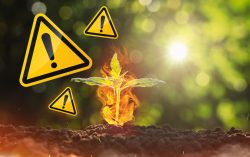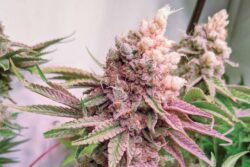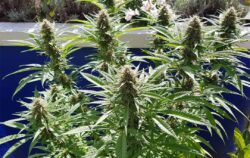How to defoliate cannabis plants for bigger yields
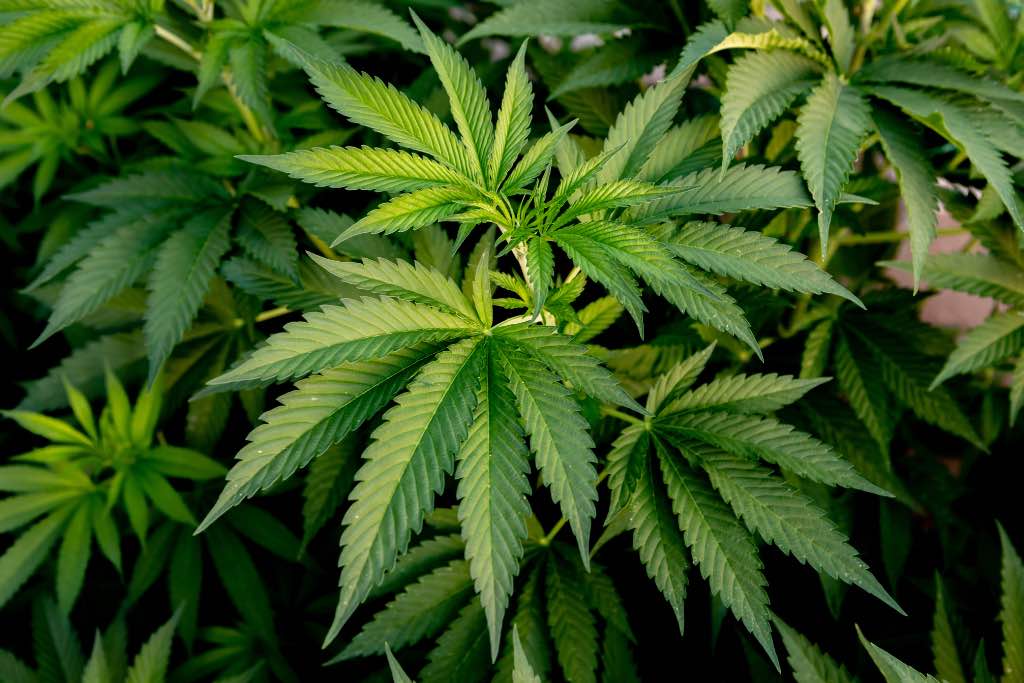
Indoor growers of all types love to make the most of their grow room. Great satisfaction can come when the quality-focussed grower finds improvements which increase potency and boost yield. For some growers, defoliating their cannabis plants allows them to achieve this by allowing buds/blooms to develop in optimised conditions under direct light. Why is cannabis deflation so useful to indoor growers? In nature, the sun conveniently travels from one side of the sky to the other, ensuring that all branches and blooms receive some direct light.
However an indoor grow light in an optimised grow environment is usually placed in a fixed position. Only a minority of growers use light movers which, like the slowly moving sun, minimise permanent shadows. A thick canopy of leaf cover is difficult to avoid in an optimised indoor grow room. This can create permanent shadows above nodes/bloom points. Subsequent growth is limited as a result and yields are reduced.
If you defoliate cannabis you enhance light penetration as well as improving airflow. Some growers oppose defoliation of cannabis, feeling that removal of the leaves reduces the energy-collecting ability and vigour of the plant. But these days it is probably only a minority of growers who never defoliate indoor cannabis plants.
What is cannabis defoliation?
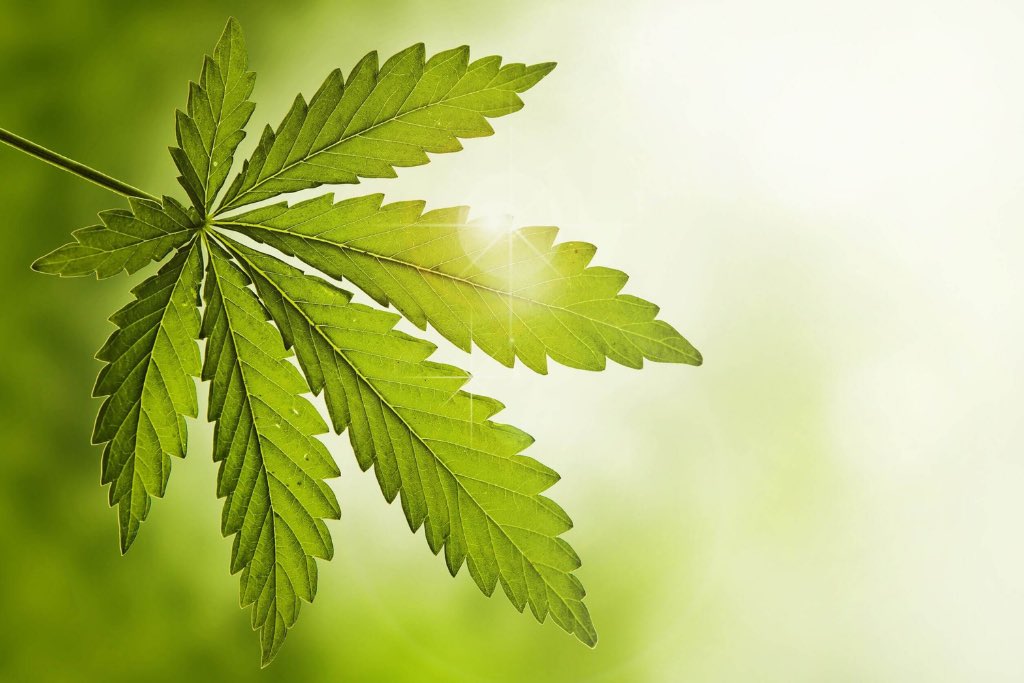
Cannabis plant defoliation may appear straightforward, but it’s important to state that it does involve some degree of risk. The inexperienced grower may be tempted to over-defoliate a cannabis plant. This can reduce final yield potential, by stunting growth and removing healthy bloom points.
Some growers question the fundamental logic of cannabis defoliation. For what reasons would a plant waste energy producing leaves that are simply not required? Cannabis plants use leaves partly for nutrient storage should they be required e.g. in the event of nutrient shortages, droughts or pest infestations.
However, if you are growing cannabis indoors, some of this extra leaf growth simply isn’t required. One of the great benefits of growing cannabis indoors using controlled environments and ideal grow conditions are perfect temperature/humidity levels and low risk of pests, droughts and nutrient shortages. As such, for indoor growers the thick canopy of light-blocking foliage becomes more of a burden than an asset.
Cannabis defoliation can play a useful role in these situations. By removing some of this excess foliage you help your plant make better use of its limited light resources. Cannabis defoliation also improves airflow around your plants. This in turn reduces the risk of humidity problems and the subsequent chances of pests/mould.
It’s important not to confuse defoliation with other plant maintenance/training techniques such as lollipopping. This involves stripping the entire bottom part of a plant, including the nodes (and entire branches), leaving the main stem stripped back like a lollipop stick. Defoliation simply involves strategically removing leaves from different areas of the plant and doesn’t require the removal bud sites or branches.
Why should growers defoliate their cannabis plants?
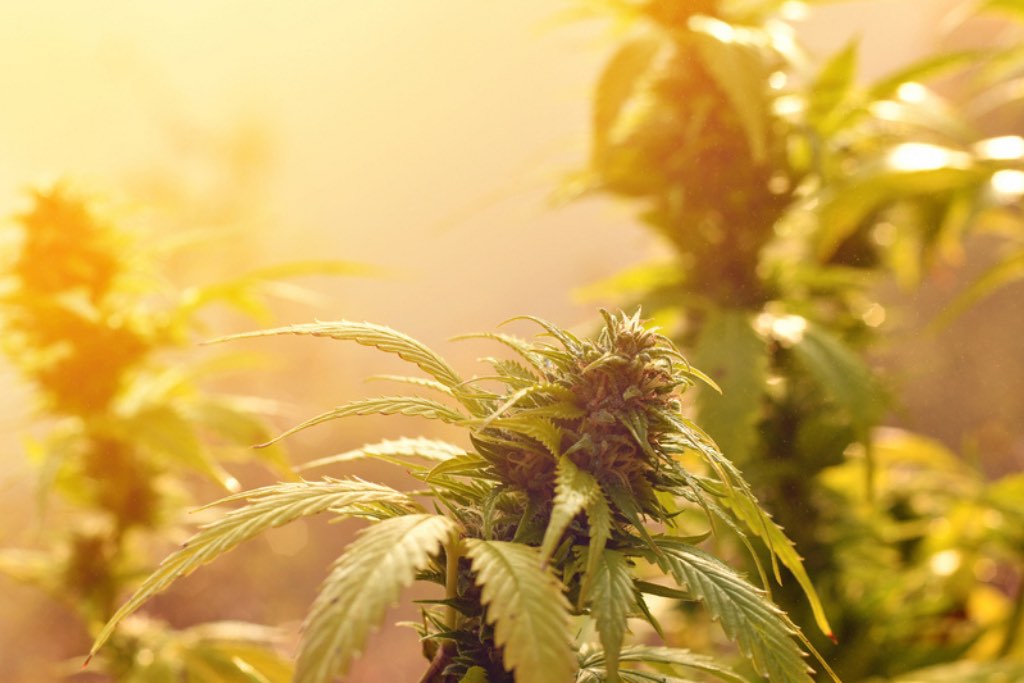
The main reason to defoliate cannabis plants is to remove leaves which would otherwise block light from developing bud sites. Most fans of the technique would say that they defoliate cannabis for bigger yields. Potency should also improve since the buds will develop under optimised PPFD (light intensity levels). Air circulation around your grow room may also be improved. As any experienced cannabis grower will tell you, it’s often the consistent accumulation of numerous small improvements which allow the best growers to produce superior quality harvests.
Related:
Guide to grow lights, PAR, PPFD, Wattage and DLI
To summarise, the main reasons to perform cannabis defoliation are:
- Defoliate cannabis for bigger yields
- Defoliate cannabis for improved potency
- Improved air circulation
- Less chances to face mold/mildew as well as pests issues
It’s worth adding that professional tomato growers also defoliate tomato plants to improve yield. They also often prune their plants, removing branches that form at the nodes between the stem and primary branches.
It’s important not to confuse pruning with cannabis defoliation. Pruning is a more risky form of plant maintenance that involves complete branch removal and is rarely practiced by cannabis growers, unless it’s necessary to prevent over crowding or improve air flow.
One important tip to those that have little or no experience with the cannabis defoliation technique is to err on the side of caution. If you completely defoliate cannabis or remove too many leaves it severely compromises the plants ability to photosynthesise and grow effectively. For that reason, less experienced growers may wish to start slowly and gain experience gradually.
When is the best time to defoliate cannabis plants?

The best time to defoliate cannabis? Many growers feel that there are no fixed rules and remove fan leaves occasionally throughout the grow. They feel that cannabis defoliation, when done in moderation, benefits overall plant development. Others feel a more formal approach towards cannabis defoliation has helped improve their yields. This involves an initial defoliation in veg and a follow-up cannabis defoliation during the first half of bloom.
Defoliating cannabis plants in vegetative stage

Many feel that the best way to defoliate cannabis is to do so initially during vegetative growth, perhaps a week or so before flowering. This allows your plant time to recover before the various biochemical and hormonal changes associated with cannabis flowering begin. The three main cannabis defoliation aspects to consider during vegetative growth are:
- Remove old, yellowing leaves. These are often past their best in terms of their ability to contribute effectively to photosynthesis. Removing them allows better light penetration to plant growth below.
- Some of the larger fan leaves which overshadow bloom points below them are also targets during cannabis defoliation. Removing some of them can allow substantial amounts of additional light to penetrate to lower nodes.
- Leaves which grow inwards towards the main stem of your cannabis plant can also put important bud sites permanently in the shade unless they are removed.
When should you not defoliate cannabis in veg?
If your plant is looking unhealthy it’s always best to minimise further stress for the plant. Likewise if your plant has been suffering from pests, overwatering, disease or the effects of over/under nutrition it is also wisest to protect your plants from any additional stress – that would be the wrong way to defoliate cannabis.
Outdoor marijuana growers often don’t bother with cannabis defoliation. That’s because outdoor grown cannabis plants benefit from the sun’s movement from one side of the sky to the other. This naturally minimises the creation of permanent shadows and allows most of the plant chance to enjoy direct sunlight for some of the day. This allows the outdoor grower to leave all the foliage on their plants and allow them to reach monster sizes.
Defoliating cannabis plants in flowering stage
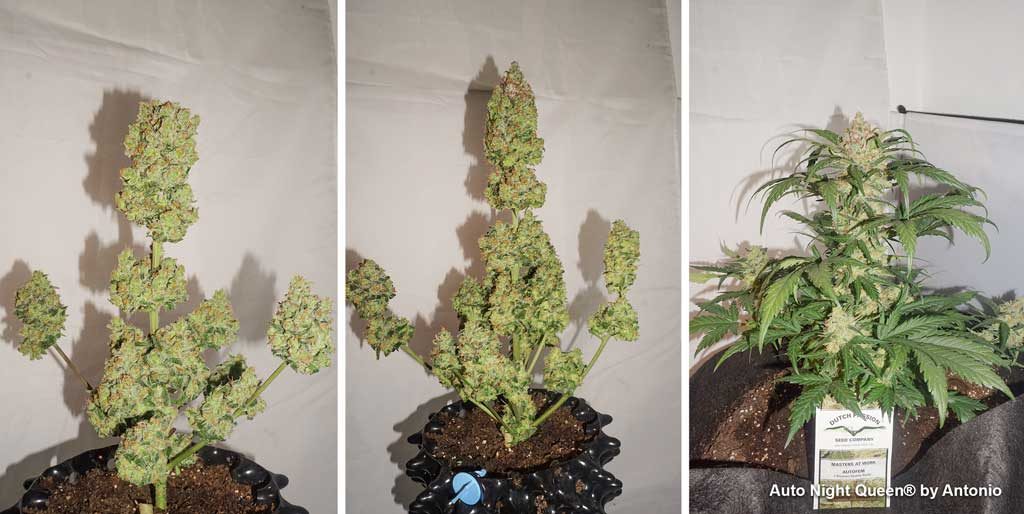
Often growers are somewhat more cautious about cannabis defoliation during bloom – no-one wants to jeopardise the emerging crop. Often growers will prefer, where possible, to ‘tuck’ healthy green leaves behind bloom points rather than remove the leaves completely.
How often defoliate cannabis during flowering? Often growers will plan a cannabis defoliation around the third week of bloom. After this point (in the second half of bloom) many growers feel the the plant shouldn’t have to endure too much stress and should be allowed to focus her growth and energy towards bud/resin production.
When should you not defoliate cannabis in bloom?
Less experienced growers should pay particular attention when undertaking a cannabis plant defoliation, no-one wants to accidentally remove a bloom point! Removing fewer leaves is less damaging than over-defoliating. As always, minimise plant stress during cannabis flowering.
Avoid cannabis defoliation if your plant is suffering or is recovering from:
❌ Pest infestation
❌ Over/under watering
❌ Over/under feeding
❌ Any other type of disease/issue affecting your plant health
How to defoliate cannabis plants
Like many aspects of cannabis cultivation much will depend on the individual plant and the growing environment it is in. There is no substitute for grower experience, in that respect cannabis defoliation can be regarded more as a learnt skill than a process which can be taught simply by following a list of instructions. The experienced grower will have practical experience and learnings on which to base decisions of how and when to defoliate cannabis. The less experienced grower may want to start slowly before attempting more serious cannabis plant defoliation.
Those curious to see a cannabis defoliation comparison could consider growing clones, performing cannabis defoliation on one plant but not another and comparing the results in their particular grow conditions.This can also show the grower how to defoliate cannabis as well as quantifying the potential benefits. Not only that, it can also allow the grower to gain valuable experience about when to defoliate cannabis for the best results.
How to defoliate cannabis in vegetative stage
Aim to allow your plant time to recover before bloom begins. That may mean aiming for a cannabis defoliation a week or two before bloom. When growing autoflower seeds, time in vegetative growth is often limited to around a month or so. For that reason many auto growers don’t bother with much/any cannabis defoliation. When growing photoperiod feminised cannabis seeds it’s easy to schedule a cannabis defoliation a week or two before bloom begins. If your homegrown cannabis has too many leaves, simply remove them near the stem using a pair of sharp scissors. The sharper (and cleaner) the better, you want to leave a clean cut with no infection.
Related:
Cannabis vegetative stage how-to-guide
How to defoliate cannabis in flowering stage
How much to defoliate cannabis in flower? It all depends on the individual circumstances. How big is the plant? how packed is the grow room? how powerful is the light? how much foliage is there?
There are many questions and each grow is unique. This makes it difficult to give rigid recommendations. For example, when growing sativa cannabis seeds the leaves will have thin fingers. These allow reasonable levels of light to pass through to lower levels. Sativa strains may need less cannabis defoliation than plants grown from indica cannabis seeds. Plants grown from hybrid cannabis seeds may lay somewhere in-between.
Plants grown to a large size may have more problems with overshadowing caused by their leaves than smaller plants. There are numerous different factors to consider when deciding whether how and when to defoliate cannabis in flower. The more experienced grower is better positioned to judge how to defoliate cannabis. Therefore the best advice to the less experienced grower is to increase your experience little by little with each grow.
Related:
Cannabis flowering stage how-to-guide
Cannabis defoliation key takeaways and FAQ
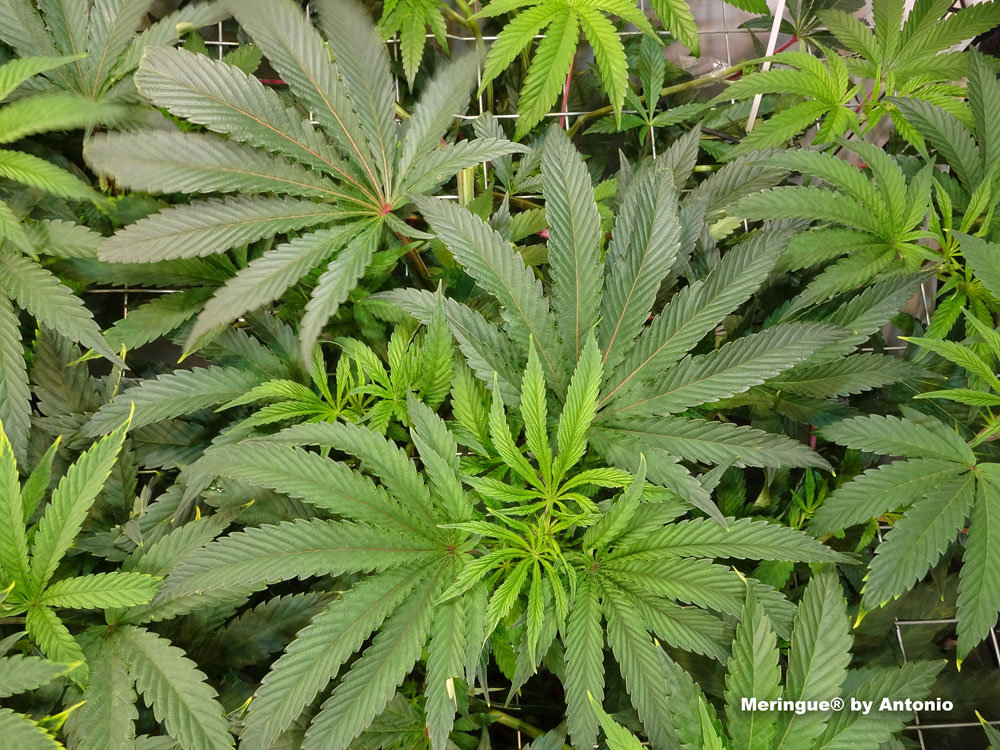
Cannabis defoliation is a useful technique which is best exploited by those with plenty of grow experience using a range of indica/sativa strains. When done well you increase light penetration boosting blooms and improving potency. One particularly important consideration is that cannabis defoliation is often best done in combination with other techniques which can assist the production of heavy blooms.
Those growing cannabis with the SCROG method, for example, will find that a combination of plant training alongside cannabis defoliation can produce especially impressive harvests. Likewise those that use the LST technique (low stress training) by tying down their cannabis plants may also want to perform some cannabis defoliation to further assist an open plant structure. Cannabis plant defoliation is a useful tool available to indoor growers of all types, no matter which grow method or grow medium they use.
| How often can you defoliate cannabis in veg? |
| Normally cannabis defoliation is performed perhaps once or twice when growing from photoperiod feminised cannabis seeds. Of course, some won’t defoliate cannabis at all during vegetative growth. That may also include those growing autoflowering cannabis seeds. |
| How often can you defoliate cannabis in bloom? |
| Most growers are mindful that cannabis leaves are also the energy-collecting solar panels which provide the power to drive photosynthesis. For that reason growers are aware of the potential dangers of excessive cannabis defoliation. Some growers will restrict themselves to a defoliation in the first half of bloom, perhaps around week 3 of flowering. Others may prefer to remove occasional leaves from time to time throughout bloom rather than conduct a major one-off cannabis defoliation. Use your skill and experience to assess each situation on it’s own merits. Remember, if in doubt (or if you lack experience with cannabis defoliation) it is wiser to err on the side of caution. |
| How late is too late to defoliate flowering cannabis? |
| Those that love photographing their prized plants, e.g. for social media, sometimes like to perform a complete cannabis defoliation right before harvest. This allows the grower to display the blooms in their full glory without any leaves blocking the view. Usually this is done at the point of harvest, or immediately before. |
| How much to defoliate in veg vs bloom? |
| Again, it’s difficult to make any fixed rules. Moderation is the key. The judgement is one which has to be made by the grower considering various factors including plant health, size, level of shading caused by the canopy of leaves, air circulation, light power/penetration, indica/sativa leaf characteristics and much more. Remember, you could always grow your favourite clones side-by-side in your specific grow conditions and compare yields from them following varying levels/timings of cannabis defoliation. This would allow you to make real-world side-by-side comparisons in your grow environment and assess precisely how much cannabis defoliation is optimum and how much cannabis defoliation is too much. For the grower seeking precise and specific recommendations, this is the perfect way to find out. |
| How late is too late to defoliate cannabis? |
| The danger of excessive cannabis defoliation in bloom is that it could compromise subsequent bud production if plant health and bloom development is affected. That’s why grower skill/experience and their ability to understand cannabis defoliation limits is so important. |
| How late is too late to defoliate flowering cannabis? |
| Many would avoid major cannabis defoliation during the second half of bloom simply to avoid risking interrupting/affecting yield and bud development. However, as flowering reaches the end and the blooms have already attained maximum size, some growers love to perform a severe/complete cannabis defoliation for photographic purposes. |
| Is it better to trim back leaves or defoliate cannabis? |
| Some growers prefer to occasionally remove, or ‘trim back’ leaves whenever required rather than perform a serious one-off cannabis defoliation. The choice is up to the grower. If the grower is cautious/worried about defoliating cannabis then they can also try ‘leaf tucking’. This is where the grower pushes leaves back behind the bloom point rather than cutting the leaf off. |
Avoid these mistakes when defoliating cannabis
The main three blunders seen during cannabis defoliation are: accidental removal of bloom points, accidental removal of branches, excessive leaf removal which stunts subsequent overall plant health, development and yield.
For these reasons, less experienced growers are advised to act with caution until their defoliation experience increases. Those growing clones (with identical cannabis genetics) may find it useful to compare yields from plants that have undergone varying levels of cannabis defoliation.Accidental removal of bloom points
❌ Accidental removal of bloom points
❌ Accidental removal of branches, and
❌ Excessive leaf removal which stunts subsequent overall plant health, development and yield.
For these reasons, less experienced growers are advised to act with caution until their defoliation experience increases. Those growing clones (with identical cannabis genetics) may find it useful to compare yields from plants that have undergone varying levels of cannabis defoliation.











